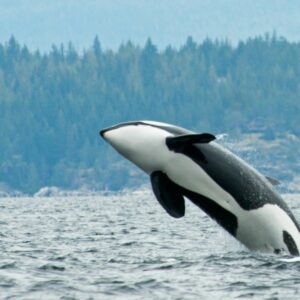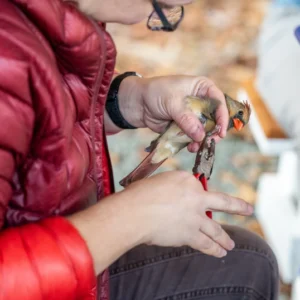Genetic pollution is irreversible: FDA requires reassessment. Will Canada follow?
A US court just ordered the Food and Drug Administration (FDA) to reassess the environmental impact of genetically engineered salmon. This is a huge win for all those who have been fighting to protect wild species from this new technology.
I first began hearing about this fish ten or so years ago when it came to light that a US company with operations in PEI was developing a genetically engineered (GE) Atlantic salmon.
The salmon contains genetic material from two other species, a saltwater fish, called an eelpout, and the West Coast chinook salmon. The company claims their fish, which they have patented, grows faster.
There was the risk of escape and genetic contamination of wild salmon. It didn’t sound good but at the time I didn’t need a new problem to worry about.
In 2012, Lucy Sharratt with Canadian Biotechnology Action Network pleaded with the Nova Scotia-based Ecology Action Centre, for whom I was working at the time, to get engaged.
As Lucy knew, precedents matter, particularly for an industry looking for social licence. She said that, if approved, this fish will be the first genetically engineered food animal in the world to be raised and sold for human consumption.
Her pleas resonated. The Atlantic salmon, an incredible fish, is already highly endangered and didn’t need another threat to its survival. And it was in our backyard.
We went to court twice and lost twice based on the judge’s interpretation of the very obtuse and now outdated Canadian Environmental Protection Act (CEPA) which regulates toxic products but also engineered animals.
That was the law. What about the science?
In two separate assessments, scientists at the Department of Fisheries and Oceans (DFO) ranked the hazard of GE salmon to wild salmon as very high. That’s because it only takes one GE salmon to breed with a wild salmon and the wild salmon is changed forever. There is no clean-up or remediation. Genetic contamination or pollution is irreversible.
However, DFO scientists went on to rank exposure as low because the company is using land-based facilities and the fish are triploid(3 chromosomes) and can’t breed. These measures are significant barriers, but insufficient, given the risk. There are documented escapes from land-based facilities, especially of eggs and young. And not all these GE salmon are triploid. Up to 5% aren’t triploid, they can breed with wild salmon.
With DFO scientists signing off, in 2018 the Canadian Government allowed AquaBounty to begin growing genetically engineered salmon in commercial quantities on PEI. If things go AquaBounty’s way, the number of fish and facilities will multiply with hundreds of millions of fish being grown and shipped, sometimes in the same facilities as non-engineered salmon, and often next door to wild salmon rivers.
More expansion will equal more exposure and more risk. It is my assessment that it is a question of when, not if, engineered fish will escape and breed with wild Atlantic salmon.
Now, years later, the Canadian government is finally working on updating CEPA. Nature Canada and other groups are working to ensure it is fully modernized, including to deal with the threats posed by these fish.
For Indigenous Peoples, this ultimate assault on nature is but a continuation of the European practice of treating nature as a resource not a relationship. As Nature Canada Board member Charlie Sark puts it:
 “Over thousands of years, the Mi’kmaq and neighbouring allies developed a relationship with the salmon. Our ceremony, the placement of our camps and communities, words and expressions in our language, the sharing of resources and our protocols with neighbouring peoples can all be traced to our relationships with the animals that we view as sacred. As equal. Including the salmon.”
“Over thousands of years, the Mi’kmaq and neighbouring allies developed a relationship with the salmon. Our ceremony, the placement of our camps and communities, words and expressions in our language, the sharing of resources and our protocols with neighbouring peoples can all be traced to our relationships with the animals that we view as sacred. As equal. Including the salmon.”
The Canadian Government has not consulted with Indigenous Peoples about GE salmon. They must.
In labs around the world the technology is developing rapidly. Unfortunately, our government is not keeping pace. The Canadian Environmental Protection Act hasn’t been updated in 20 years. When it was written, many GE technologies were not yet a thing.
The Canadian Government can look to the US court decision for guidance. Judge Vince Cchabria concluded that the FDA had failed to assess adequately the risk to wild salmon. Particularly encouraging was that he ordered the agency to assess not just the risk from one project, but the risk of numerous projects, in other words, the totality of the risk. The Canadian Government needs to do the same.
Genetic engineering is complex, complicated and controversial but let nobody tell you it isn’t a pressing issue for conservationists. Humans now have the power to alter the genome of any species on the planet with relative ease; this has huge implications.
We need to summon all our wisdom and humility, and in particular look for guidance from Indigenous Peoples, in the decisions, we make about these technologies.



